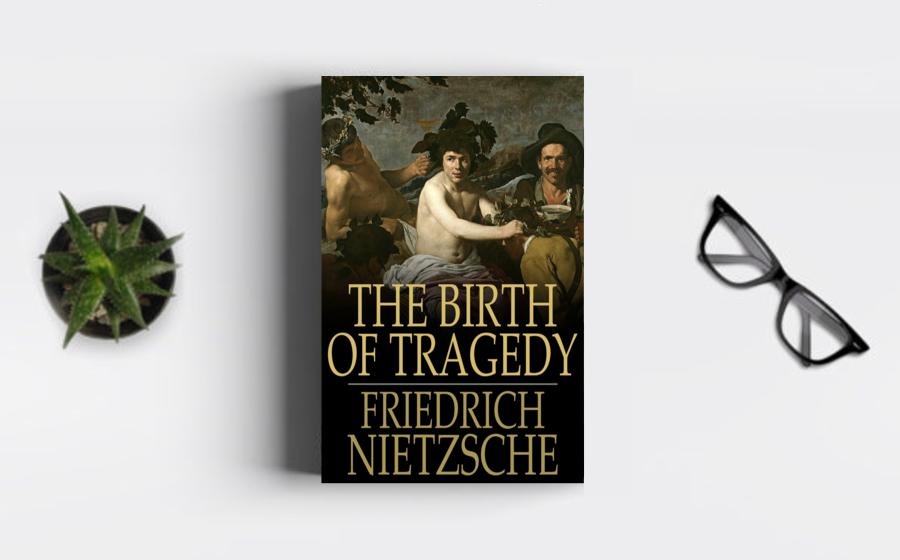"The Birth of Tragedy," published in 1872, emerges as
a seminal work that transcends its historical context to
delve into the timeless realms of art, culture, and the
fundamental forces that shape human existence. In this
thought-provoking treatise, Nietzsche explores the
duality of the Apollonian and Dionysian elements in
ancient Greek tragedy, providing profound insights into
the nature of creativity, the tragic experience, and the
eternal cycles of artistic expression. The enduring
philosophical resonance of "The Birth of Tragedy" lies
in its capacity to provoke contemplation on the
perennial themes of human existence and artistic
creation.
Nietzsche begins his exploration by
introducing the Apollonian and Dionysian dichotomy - the
dual artistic principles he identifies as the driving
forces behind Greek tragedy. The Apollonian, named after
the god Apollo, represents qualities of order, harmony,
and individuality, while the Dionysian, named after the
god Dionysus, embodies elements of chaos, irrationality,
and collective ecstasy. Nietzsche contends that these
opposing forces converge in tragic art, offering a
unique lens through which to understand the dynamic
interplay of creative energies.
One reason "The
Birth of Tragedy" stands as a timeless philosophical
work is its profound examination of the relationship
between Apollonian and Dionysian elements in art and
culture. Nietzsche argues that the tension and interplay
between these forces give rise to the most potent and
sublime forms of artistic expression. The dialogue
between order and chaos, reason and instinct,
individuality and collective experience, reflects the
enduring struggle and harmony inherent in the human
condition. This exploration provides readers with a
framework to analyze not only ancient Greek tragedy but
also the broader spectrum of artistic endeavors across
diverse cultures and epochs.
The work's analysis
of Greek tragedy, particularly the dramas of Aeschylus
and Sophocles, contributes to its timeless significance.
Nietzsche contends that these tragedies reached their
zenith when the Apollonian and Dionysian elements were
in perfect balance. The tragedy, according to Nietzsche,
serves as a cathartic experience that reconciles the
tension between the opposing forces, allowing for the
transcendence of individual suffering through a
collective, Dionysian affirmation of life. This
perspective invites readers to reflect on the nature of
tragedy as a universal human experience and its role in
shaping cultural narratives throughout history.
Nietzsche's critique of Socratic rationalism and its
impact on the vitality of art adds depth to the enduring
relevance of "The Birth of Tragedy." Nietzsche argues
that the Socratic influence, with its emphasis on
rationality and individual consciousness, led to the
decline of the Dionysian spirit in art. The suppression
of Dionysian elements, Nietzsche contends, resulted in a
sterile, overly rational culture that stifled the
creative life force. This critique prompts readers to
consider the implications of an overemphasis on reason
and individuality in the realms of art and culture,
inviting reflection on the delicate balance needed for a
vibrant and life-affirming creative spirit.
The
concept of the "Apollonian dream" and the "Dionysian
intoxication" as essential components of artistic
inspiration contribute to the timeless nature of
Nietzsche's insights. The Apollonian dream represents
the clear, ordered visions that guide artistic creation,
while the Dionysian intoxication signifies the ecstatic,
irrational, and collective elements that infuse art with
primal vitality. This dual nature of artistic
inspiration continues to resonate with creators and
appreciators of art, offering a framework to understand
the diverse sources of creative inspiration and the
multifaceted aspects of artistic expression.
Nietzsche's examination of the eternal recurrence - a
concept suggesting that all events in life will repeat
infinitely - adds a metaphysical dimension to "The Birth
of Tragedy." Nietzsche introduces the idea that
embracing the eternal recurrence can lead to a profound
affirmation of life. This existential perspective
prompts readers to consider the implications of such a
worldview on their choices, values, and attitudes toward
existence. The exploration of the eternal recurrence
resonates with perennial questions about the meaning of
life, the nature of existence, and the human capacity
for affirmation in the face of suffering.
The
work's reflection on the nature of beauty and its
relationship to tragedy contributes to its timeless
significance. Nietzsche posits that tragedy, by
incorporating both Apollonian beauty and Dionysian
ecstasy, achieves a sublime synthesis that transcends
the limitations of individual aesthetics. The discussion
of beauty as an integral element of tragedy invites
readers to reconsider conventional notions of aesthetic
appreciation and explore the deeper, more complex
dimensions of beauty that emerge from the interplay of
opposing forces.
Nietzsche's critique of the "Socratism
of morality" and the implications of moral ideals for
artistic creativity remains relevant in contemporary
discussions on ethics and art. He contends that the
Socratic emphasis on rational morality led to a
moralistic suppression of the Dionysian spirit, stifling
the creative vitality of art. This critique prompts
readers to reflect on the relationship between moral
values and artistic expression, raising questions about
the potential tensions and synergies between ethical
principles and the Dionysian forces that animate
creativity.
The work's influence on subsequent
philosophical and artistic movements, particularly
existentialism and modernist aesthetics, underscores its
enduring impact. Nietzsche's ideas on the nature of
tragedy, the conflict between reason and instinct, and
the quest for authenticity resonate with thinkers and
artists who sought to break free from traditional norms
and explore new dimensions of human experience. The
echoes of "The Birth of Tragedy" can be traced in the
works of existentialist philosophers such as Jean-Paul
Sartre and Albert Camus, as well as in the innovations
of modernist artists like Richard Wagner and T.S. Eliot.
Nietzsche's exploration of the Dionysian element as
a source of renewal and cultural vitality contributes to
the timeless relevance of "The Birth of Tragedy." He
contends that the reintegration of the Dionysian spirit
can revitalize culture, infusing it with a primal,
life-affirming energy. This perspective invites readers
to reflect on the cyclical nature of cultural movements,
the potential for cultural renewal through the embrace
of the irrational, and the dynamic interplay between
tradition and innovation.
The work's influence on
the philosophy of art and aesthetics continues to shape
contemporary discussions on creativity and artistic
expression. Nietzsche's insights into the interplay of
Apollonian and Dionysian forces offer a nuanced
understanding of artistic inspiration and the
complexities of the creative process. The examination of
tragedy as a synthesis of opposing elements provides a
framework for analyzing the profound impact of art on
the human psyche and its capacity to evoke
transformative experiences.
"The Birth of Tragedy" by Nietzsche stands as a timeless philosophical work that transcends its historical context to explore fundamental questions about art, culture, and the human experience. Its examination of the Apollonian and Dionysian forces, the nature of tragedy, and the eternal cycles of creation provides a profound framework for understanding the complexities of artistic expression and the perennial themes of human existence. Nietzsche's insights continue to resonate with readers, inviting contemplation on the interplay of opposing forces, the quest for authenticity, and the eternal dance of creation and destruction that defines the timeless nature of art and life.






